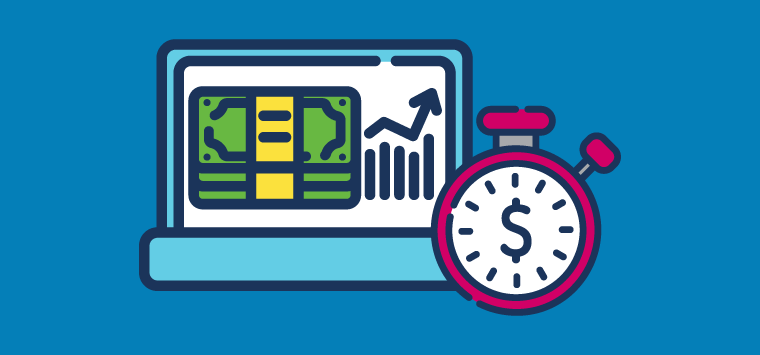Payroll Processing Integrations and Controlling Costs
Payroll processing impacts different areas of a business and usually involves tracking hours, calculating pay, distributing paychecks and reporting taxes. Because employee compensation is generally the largest expense for a business, errors can cause significant financial losses.
Common payroll processing mistakes include data entry errors, incorrectly classifying employees, making the wrong deductions, missed deadlines, incorrect overtime calculation, tax-related issues and failure to comply with governmental regulations. These payroll errors can also have a negative impact on employee trust, leading to increased turnover.
Each year, hundreds of thousands of aspiring payroll experts enroll in training programs, and the same professionals access resources to learn how to help companies process their payroll and maintain compliance. Cleaning and security professionals are part of that pool, as those businesses understand that the accuracy of each paycheck is dependent on accurate data.
Different payroll solutions allow businesses to process their own payroll since some businesses outsource payroll to third-party providers. With an integrated workforce management system, it is possible to cut payroll processing time by 90%, in addition to experiencing these benefits:
- Processing payroll in-house to control costs
- Using an integrated solution that shares data
- Better determining the profitability of each job
In-house payroll processing
Processing payroll in-house saves time, eliminates third-party provider costs and provides more visibility and control over payroll. With an integrated solution, data can be shared across departments to ensure payroll is processed using correct timekeeping and time-off data.
By processing payroll in-house with an integrated solution, it’s possible to better understand true labor and tax costs by job. That type of information can eventually help determine the profitability of each contract. Alternatively, anytime there is more than one software sharing information, data must be entered at least twice — and multiple data entries can cause a host of problems.
Businesses using multiple software solutions could be paying people who no longer work for them because they’ve terminated them in their human resources system, but never in their payroll system. Also, businesses with three different systems for HR, timekeeping and payroll will have to terminate each employee manually in three different places, which takes time and effort.
Integrating with payroll compliance software
Business owners have the option of preparing payroll in-house using a workforce management system, before exporting payroll files to compliance software. This route offers options for wage payments, tax services and/or wage garnishments, among other solutions.
Payroll compliance software aims to help reduce the regulatory compliance burden for organizations, with a combination of technology and service. However, even when using compliance software, each business is still responsible for ensuring taxes are accurate.
Payroll batches can be created in a workforce management system before being transmitted using the tax filing interface. That information is then posted to the general ledger, ensuring that a business can still gain job-costing visibility.
Outsourcing payroll processing to a third-party
Outsourcing payroll to a third-party provider is possible with an integrated workforce management system. With this option, businesses can export recorded timekeeping files from their integrated workforce management system to a third-party vendor.
Businesses oftentimes choose third-party payroll providers for help with ensuring compliance with IRS filing and deposit requirements. However, the employer still remains responsible for the deposit of the federal tax liabilities and timely filing of returns.
This option helps businesses that want the benefits of an integrated system but lack the resources to dedicate an entire staff to payroll preparation and processing.
Other benefits of integrated payroll processing
Reducing time theft and employee turnover
Integrating payroll processes can reduce time theft because working from one integrated solution means payroll staffers can process payments with the knowledge that time-tracking activities were verified by the software, without taking extra steps to confirm that information.
Integrated solutions open the door to using other features. One example is earned wage access integrations, which lets employees receive their pay as they need it, rather than waiting for a regular pay period — and it has zero impact on the company payroll. Additionally, it impacts employee turnover, as earned wage access has a history of increasing retention.
Minimizing data security risks
Employee data used to manage payroll is sensitive information. Examples include social security numbers, medical records, banking information and other financial account credentials, which are highly susceptible to identity theft. Sharing that type of sensitive payroll information with multiple systems or sources invites unnecessary data security risks.
Minimizing the number of systems sharing payroll information provides additional security to a business. Fewer programs accessing sensitive information can translate to fewer potentially compromised passwords. IT security assets like firewalls protect password access and the storage of information on a business’s internal hardware.
Controlling costs and cost-saving benefits
Small-sized businesses with less than 20 employees can benefit from integrating their payroll system because it’s cost-effective. Instead of hiring an entire payroll staff, an integrated system can help one or two employees wear multiple hats. Those staffers can perform HR, payroll, timekeeping, general ledger, invoicing and accounting responsibilities.
Medium-sized or large companies also benefit from the allocation of resources. For example, a medium or large business with an IT team can assign professionals to relevant projects. Instead of pulling IT staffers off information technology tasks to support HR and payroll, an integrated system lets payroll staffers take advantage of process driven software.
Accessing more payroll processing information
Running a payroll department can involve a host of responsibilities: distributing pay stubs, filing employment taxes, reviewing tax forms and ensuring that a business pays employees – just to name a few. However, an integrated system can help a business save time, control costs and reduce errors. To learn more about payroll processing integrations, set up a demo.
